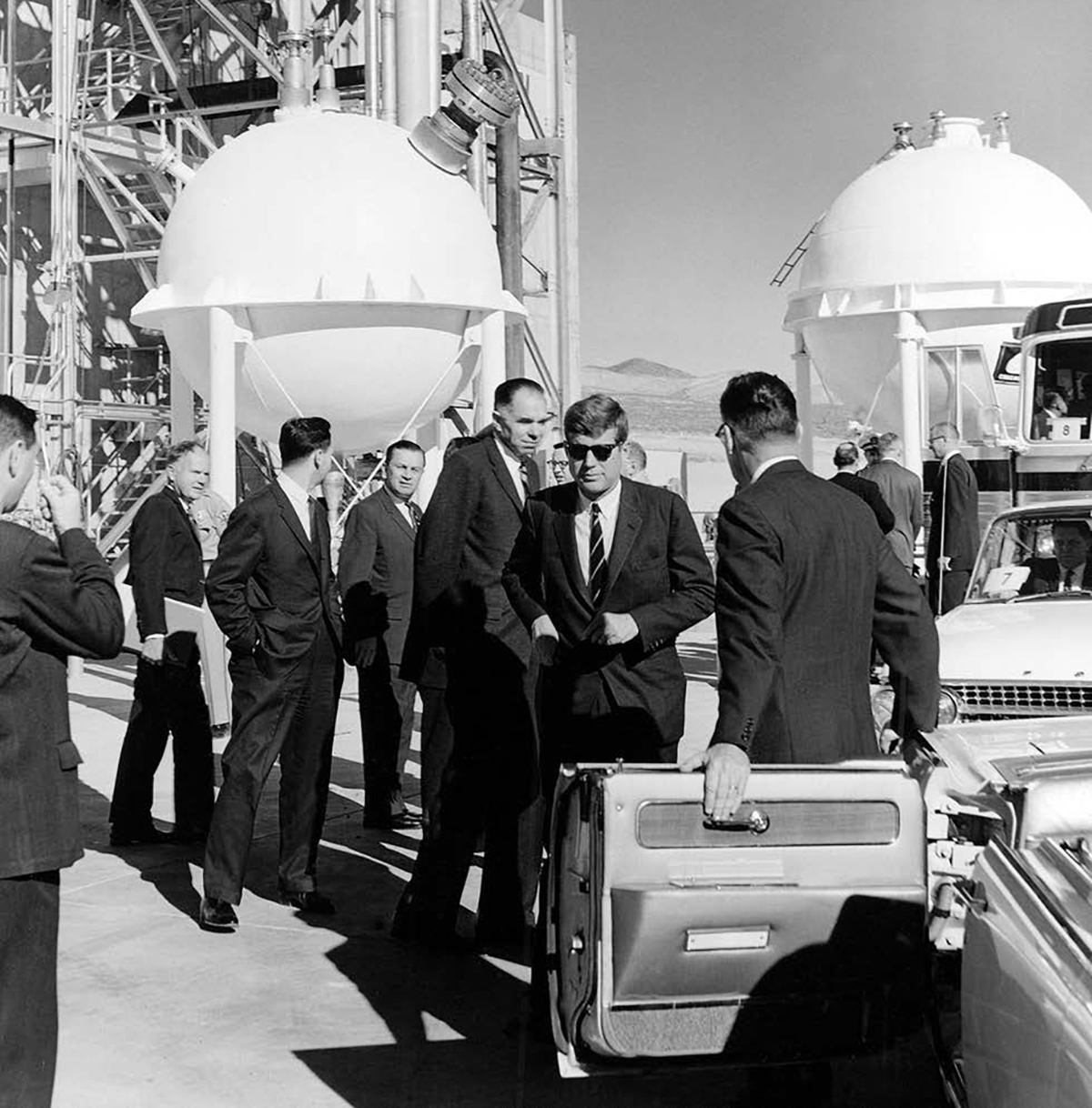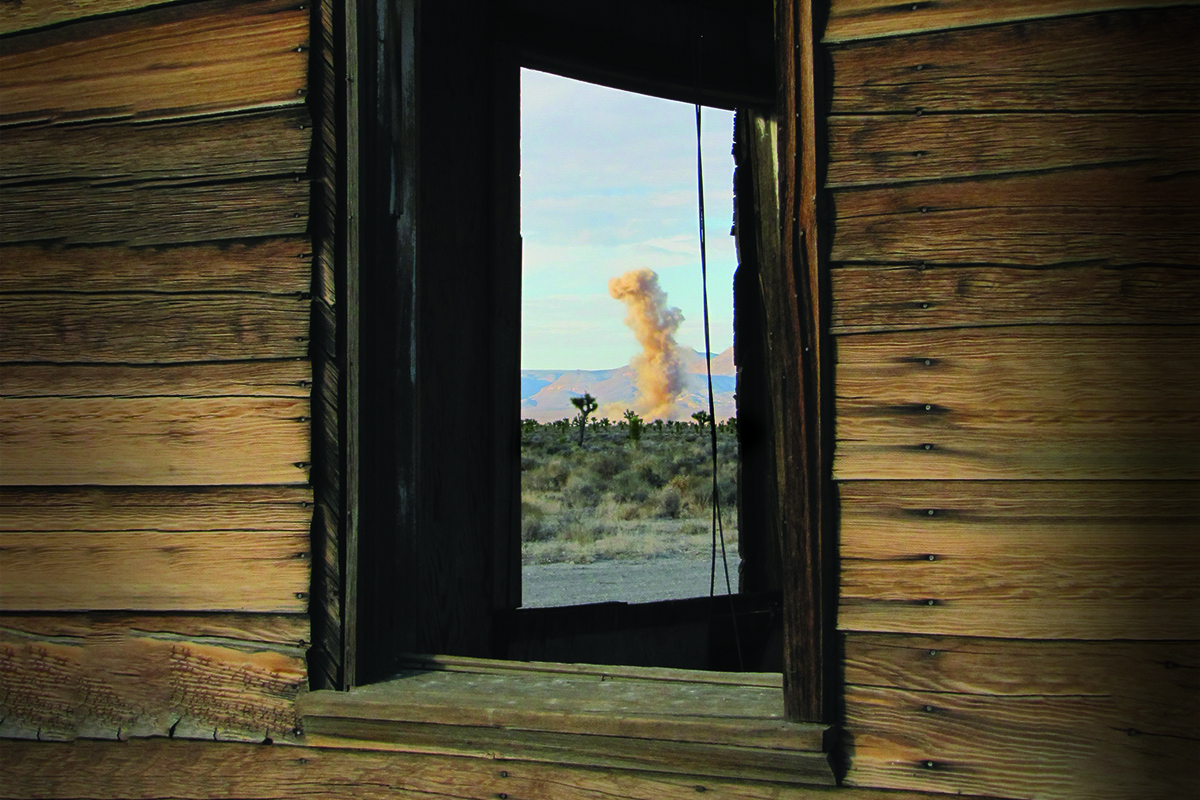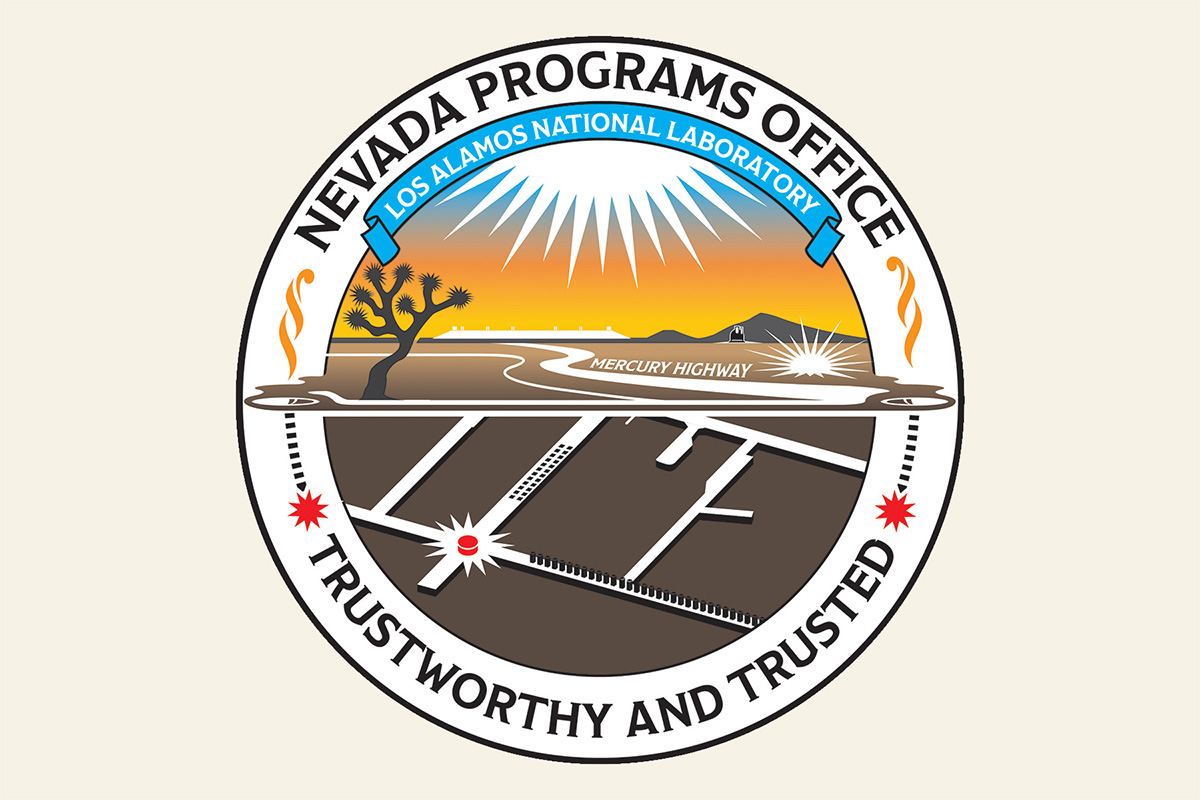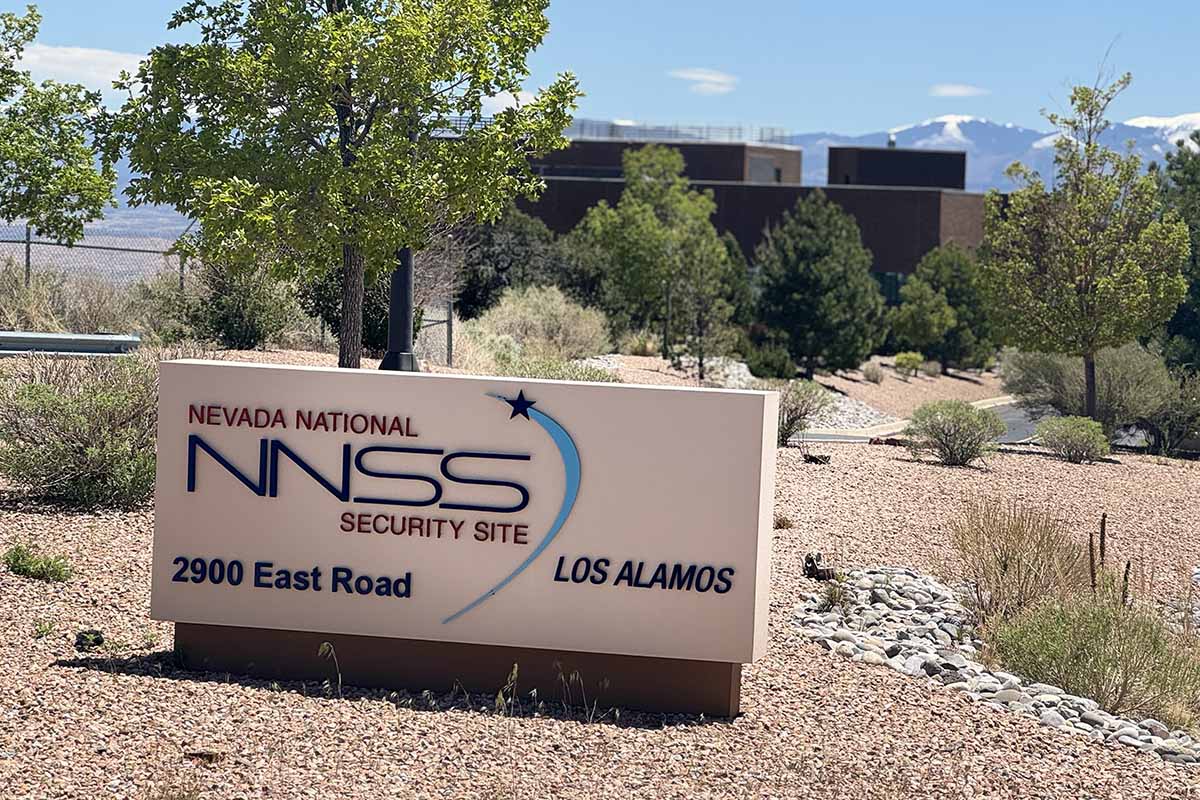From the Mojave to Mars
Los Alamos scientists developed and tested nuclear rocket engines at the Nevada Test Site.
- Ian Laird, Communications specialist

In 1952, Los Alamos Scientific Laboratory successfully tested Ivy Mike, a thermonuclear device, at Enewetak Atoll in the Pacific Ocean. Mike, however, was undeliverable on the conventional rockets and aircraft of the time because of the device’s weight (more than 160,000 pounds) and size (the equivalent of a small house). While some scientists worked to reduce the device’s size, other scientists embarked on Project Rover, an attempt to develop a nuclear-powered rocket.
The effort coincided with the national space race, and Rover immediately attracted attention and funding—could nuclear propulsion send a man to the moon? To Mars? In a special address to Congress, President John F. Kennedy requested funding to “accelerate development of the Rover nuclear rocket. This gives promise of some day providing a means for even more exciting and ambitious exploration of space, perhaps beyond the moon, perhaps to the very end of the solar system itself.”
Much of the science behind Rover took place at Los Alamos (keep in mind that the National Aeronautics and Space Administration didn’t exist until 1958) and much of the prototype testing took place at the Nevada Test Site, which had the space (no pun intended), infrastructure, and personnel to safely conduct tests.
Rover’s first nine years focused on Kiwi, a nuclear reactor design named for the New Zealand flightless bird, as researchers didn’t intend to flight-test these reactors. After successful Kiwi tests, researchers began developing the Phoebus series of reactors, one of which, Phoebus-2A, produced more than 4,000 megawatts of thermal energy in 1968, making it the most powerful nuclear propulsion reactor in the world.
Although Phoebus-2A was never meant to go into space, researchers thought perhaps the prototype reactor could be modified for travel to Mars. That dream fell short due to a lack of funding stemming from shifting priorities and the nation losing interest in space travel. However, Project Rover still had a significant impact on future science. Breakthroughs during the project led to the creation of the modern heat pipe, an essential technology that is ubiquitous in most devices, such as phones and laptops. ★








